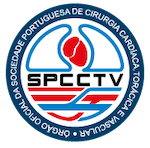ROSS SURGERY: OUR EXPERIENCE
DOI:
https://doi.org/10.48729/pjctvs.164Abstract
Objectives: At Santa Marta Hospital, Ross Surgery was performed for the first time in 1999. Twenty years later, we feel it is desirable to evaluate the mid and long-term results of our experience, as well as estimate the future of this procedure.
Methods: Between March 1999 and June 2016, 23 Ross procedures were performed at our institution. We did a retrospective analysis of the patients´ data, results of the surgery, complications, freedom from reoperation and mortality.
Results: The majority (36,4%) of the patients had aortic stenosis, 22,7% had aortic regurgitation and 27,3% had aortic stenosis and regurgitation. Sub-valvular stenosis was present in 13,6% of patients. The mean follow-up is 15 years. The overall mortality was 9%, without early mortality. In our series, 83% of the patients are free from reoperation. Eighty percent (n=16) of the survivors are in NYHA class I, with the remaining 20% (n=4) in class II.
Conclusion: Ross surgery has strict indications and in this group of patients the advantages are undeniable and the outcomes, according to our results (with 83% of patients free from reoperation, at a mean follow-up of 15 years), are positive and encouraging.
Downloads
References
J. J. M. Takkenberg et al., “The Ross procedure: A systematic review and meta-analysis,” Circulation, vol. 119, no. 2, pp. 222–228, 2009.
J. M. Stulak et al., “Spectrum and outcome of reoperations after the ross procedure,” Circulation, vol. 122, no. 12, pp. 1153–1158, 2010.
M. M. Mokhles et al., “Survival comparison of the ross procedure and mechanical valve replacement with optimal self-management anticoagulation therapy: Propensity-matched cohort study,” Circulation, vol. 123, no. 1, pp. 31–38, 2011.
I. El-Hamamsy and I. Bouhout, “The ross procedure: Time for a hard look at current practices and a reexamination of the guidelines,” Ann. Transl. Med., vol. 5, no. 6, pp. 1–5, 2017.
A. K. Kaza and F. A. Pigula, “Are Bioprosthetic Valves Appropriate for Aortic Valve Replacement in Young Patients?,” Semin. Thorac. Cardiovasc. Surg. Pediatr. Card. Surg. Annu., vol. 19, no. 1, pp. 63–67, 2016.
E. I. Chantos et al., “Autograft reinforcement to preserve autograft function after the ross procedure a report from the german-dutch ross registry,” Circulation, vol. 120, no. SUPPL. 1, pp. 146–155, 2009.
T. Carrel and A. Kadner, “Long-Term Clinical and Imaging Follow-Up After Reinforced Pulmonary Autograft Ross Procedure,” Semin. Thorac. Cardiovasc. Surg. Pediatr. Card. Surg. Annu., vol. 19, no. 1, pp. 59–62, 2016.
F. Nappi, C. Spadaccio, N. Al-Attar, and C. Acar, “The Ross procedure at the crossroads: Lessons from biology: Is Dr Ross’s dream concluded?,” Int. J. Cardiol., vol. 178, pp. 37–39, 2015.





